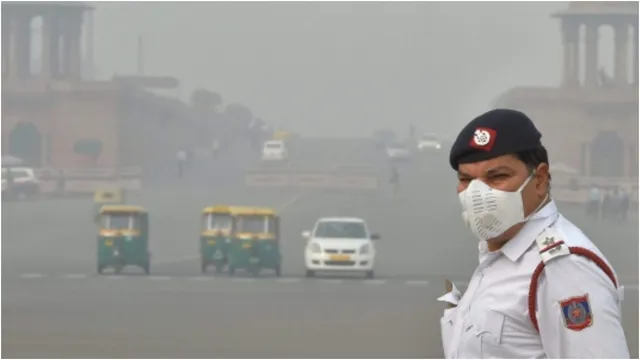- By Akansha Pandey
- Sat, 15 Nov 2025 10:15 AM (IST)
- Source:Jagran News Network
The air in Delhi-NCR has once again become a significant health burden for its residents. A thick blanket of smog is progressively enveloping the capital due to a combination of factors, including a drop in temperature, slow wind speeds, and a continuous increase in pollution sources.
According to experts, the daily rise in PM2.5 and PM10 levels indicates that Delhi's air has now surpassed the hazardous category, reaching a 'severe' state.
AQI Levels In Key Areas
The Air Quality Index (AQI) was recorded at extremely poor levels in several monitoring stations, confirming that the burden of pollution is increasing across the entire NCR.
- Wazirpur: 556 (Most Polluted)
- Sonia Vihar: 500
- Burari: 477
- Rohini: 473
- Satyawati College: 469
- Indirapuram: 459
- Chandni Chowk: 450
- Vasundhara (Ghaziabad): 449
- Noida Sector-125: 446
- Noida Sector-116: 444
Failures In GRAP-3 Enforcement
Officials believe that road dust and negligence at construction sites are continuously contributing to the rising pollution.
Despite the implementation of GRAP-3 (Graded Response Action Plan) regulations, agencies have failed to enforce them strictly. Many departments have reportedly failed on all fronts, including:
- Banning construction activities
- Sprinkling water
- Cleaning roads
As a result, pollution control measures seem to exist only on paper, while the air on the ground becomes increasingly toxic.
Also Read: Delhi-NCR Breathes 'Severe' Air: AQI Breaches 500; GRAP-3 Fails To Control Smog
Proposed New Measures And Outlook
To control the rising pollution, the Commission for Air Quality Management (CAQM) is now considering installing dust sensors on major NCR roads. This technology would enable real-time monitoring of road dust and allow for immediate action at the source.
Amidst persistent lapses by government agencies and adverse weather conditions, the air quality in Delhi-NCR is expected to deteriorate further in the coming days, posing a significant health concern for the public.

